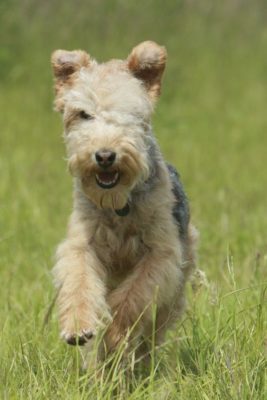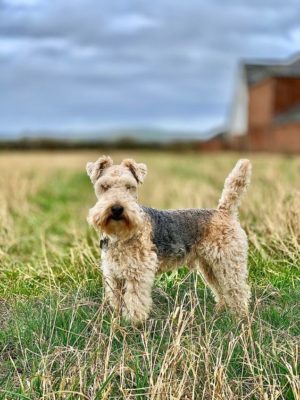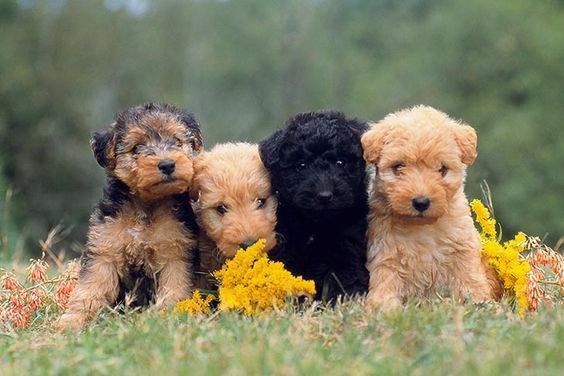Lakeland Terrier
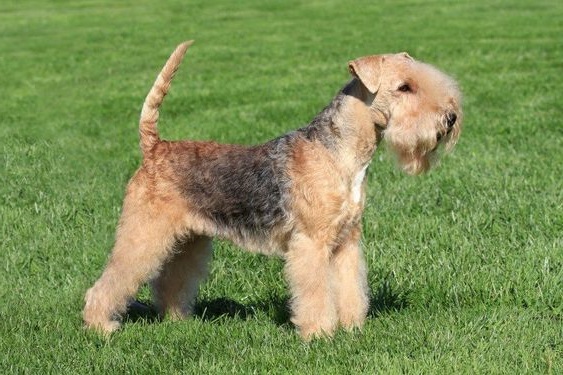
Proud, stubborn, and a little stubborn, the Lakeland Terriers like to take a leadership position. They are very hardy to all weather conditions and circumstances. They have a lot of energy, so they are not often seen doing one thing for a long time. A bit jealous, often perceive other animals in the house as rivals and are ready to compete for the owner’s attention and the best place.
Table of Contents
Breed Information
| Another Name | – |
| Origin | United Kingdom (England) |
| Height | 33-38 cm |
| Weight | Males 7.7 kg Females 6.8 kg |
| Fur | Short, stiff, with a thick undercoat |
| Color | Black with tan, blue with tan, red, wheat, ginger, brown, black |
| Lifespan | 12-15 years |
| FCI Classification | Terriers |
| Group | Dogs for kids, dogs for apartments, guard dogs |
| Price | $800-1600 |
Breed Photos
Origin History
The Lakeland Terrier originated in England in the mountains and lakes, so it was named Lakeland, which means lake country. Now there is a nature reserve on that site.
This dog’s ancestors are Border Terrier, Fox Terrier, Bedlington Terrier, and Stiff-haired black and tan terrier. Many breeders consider the Lakeland Terrier a small copy of the Airedale Terrier.
The first club of breed lovers was founded in 1912. During World War I, the club ceased to exist, and the number of dogs decreased significantly.
Thanks to fans of the breed, the number of dogs was gradually recovered, and in 1934 the breed was officially recognized. For a long time, dogs were used exclusively as hunters of wild animals and large birds, but now in the world, the Lakeland Terrier is a real family favorite and a loyal companion.
Appearance
The body is square, strong, with long limbs and a narrow body. The head is rectangular. The nasal lobe is always black. The eyes are small, dark brown. The ears are medium-sized, pointing with the corners toward the eyes.
The tail is usually cropped. The tail is set vertically, held high. The coat is of medium length, hard to the touch; there is a small undercoat.
Color comes in black with tan, blue with tan, red, wheat, ginger, brown, black. Usually, the back, body, and tail have a darker coat color than the rest of the body.
Character
Proud, stubborn, and a little stubborn, the Lakeland Terriers like to take a leadership position. They are very hardy to all weather conditions and circumstances. They have a lot of energy, so they are not often seen doing one thing for a long time.
A bit jealous, often perceive other animals in the house as rivals and are ready to compete for the owner’s attention and the best place.
It is recommended to pay as much attention to the pet as possible because they remain children throughout their lives who love to play, fool around and spend a lot of time with their owner. The Lakeland is distrustful of strangers and can be a good home guard and property protector due to its hunting instincts.
Many owners say this breed is excellent with children, always ready to play with them, and tolerate pranks. The Lakeland Terrier is still eager to learn new things, so they recommend frequent walks to train your mind and memory.
Care
The dog will feel useful both in the apartment and in a private home. The main thing is never to keep it on a leash or in a booth. It is contraindicated for them to be alone for a long time.
The Lakeland Terrier wants to take part in all family activities all the time. He should be treated as a full member of the family. The pet needs active and long walks. Their excessive energy can be released with a ball, jogging, or dog sports.
A Lakeland’s hair should be brushed daily, trimmed once every three months, and bathed twice a year. Claws usually shave, but if not, they need to be cut by hand.
Training
The Lakeland Terrier has a good memory and learns information quickly. Training should take place a little in the form of play; combine your favorite games with training.
From an early age, it is necessary to teach the pet the most specific commands “beside”, “sit”, “ew”, “place”. Training should not last more than one hour.
It is unnecessary to start learning new commands if the pet has not yet known the previous tasks. It is best to motivate him with praise and treats. It will be easier to teach the dog sports tricks and games; they will willingly compete with other animals.
Common Diseases
The Lakeland terrier is prone to these diseases:
- distichiasis;
- dislocations, fractures of extremities;
- dislocation of the lens of the eye;
- Legg-Perthes disease;
Nutrition
The diet must be balanced. The main thing in the diet should be meat (necessarily lean). You can also give cottage cheese, fish (without bones), eggs.
The primary sources of vitamins are vegetables, herbs, seasonal fruits. There should always be clean water in a separate bowl.
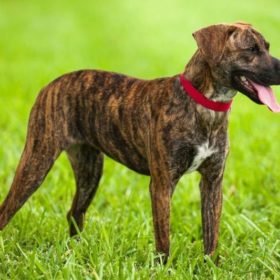 Treeing Tennessee Brindle
Treeing Tennessee Brindle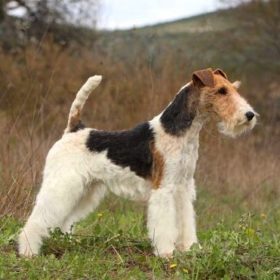 Wire Fox Terrier
Wire Fox Terrier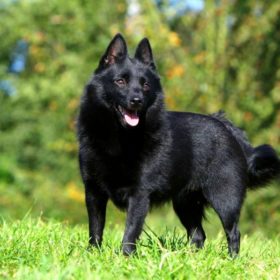 Schipperke
Schipperke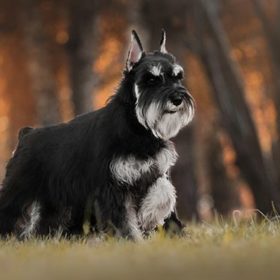 Miniature Schnauzer
Miniature Schnauzer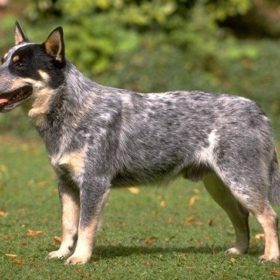 Australian Cattle Dog
Australian Cattle Dog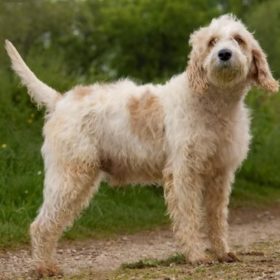 Briquet Griffon Vendéen
Briquet Griffon Vendéen